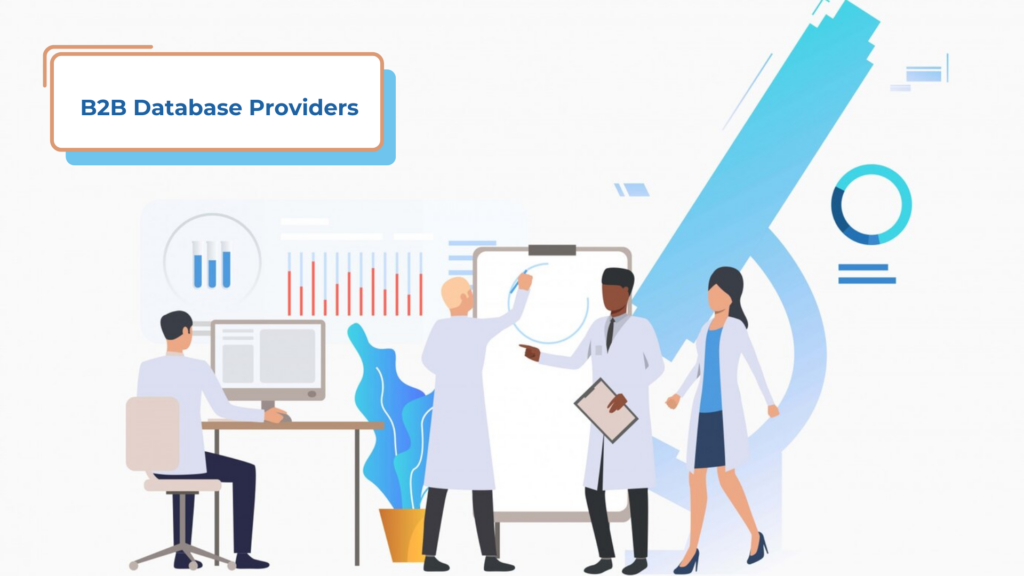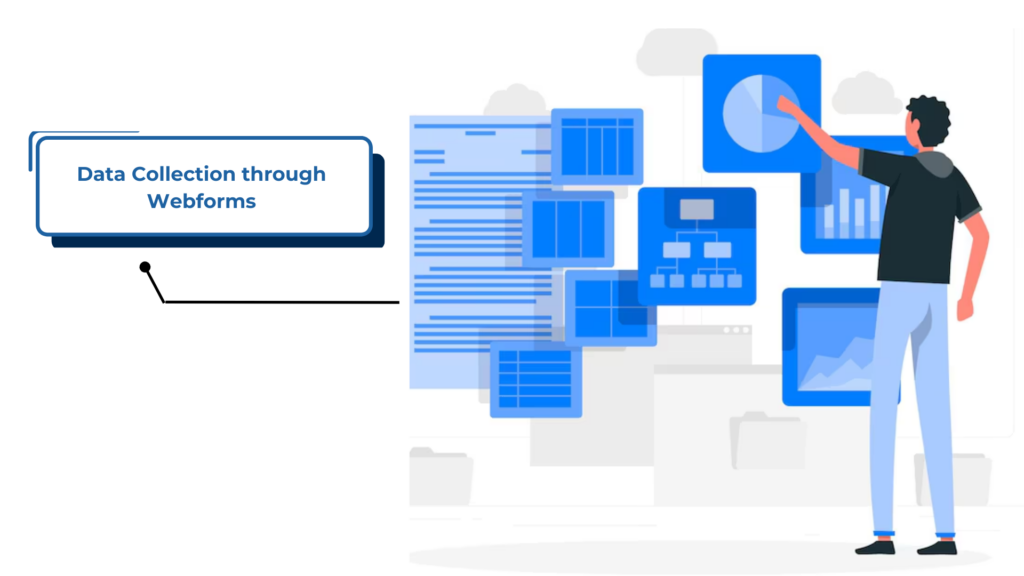
In today’s competitive healthcare landscape, accurate physician data is a game-changer for hospitals seeking to optimize their marketing efforts. For USA hospitals, building an effective marketing strategy hinges on the strength and precision of their physician databases. Whether you are marketing medical billing services or other hospital offerings, leveraging verified physician contact information can help you reach your target audience with tailored messaging that resonates.
Accurate physician data allows hospitals to communicate directly with the decision-makers, establish trust, and ensure marketing campaigns reach the right people.
But what happens when you already have a physician database that isn’t delivering the desired results?
Let’s explore why this might happen and how to fix it.
Hospital Marketing with Accurate Physician Data in USA
In the highly competitive landscape of hospital marketing, accurate physician data is key to unlocking the full potential of your outreach efforts. Targeting the right physicians with the right message at the right time can significantly impact the success of your campaigns.
Whether they are key decision-makers or influential Key Opinion Leaders (KOLs), physicians hold considerable sway in purchasing decisions, particularly when it comes to improving clinical outcomes.
By leveraging accurate and up-to-date contact data, hospitals can strategically engage with the most relevant physicians based on their specialty, geographic location, and decision-making power.
Whether your goal is to promote new medical devices, pharmaceutical products, or clinical services, accurate physician data allows for personalized marketing strategies that resonate with the right audience.
Moreover, continuous database maintenance, including regular updates and segmentation, ensures that your marketing dollars are well-spent, reducing wasted efforts and increasing the likelihood of higher engagement and conversions.
Already Have a Physician Database? Here's Why It's Under performing
Many hospitals have a physician database but still struggle to see meaningful results. The reason often lies not in the size of the database but in how it’s maintained, utilized, and updated. An incomplete, outdated, or poorly segmented database can result in poor outreach and low engagement. Below are some of the common reasons why a physician database may not be delivering the desired outcomes:
Outdated Contact Information
Physician contact information is constantly changing. A physician may relocate, switch practices, or retire without your database reflecting these changes. Using outdated contact data can result in undelivered emails, missed calls, and wasted marketing resources.
Hospitals and healthcare organizations must regularly update their databases and ensure they use only accurate, current contact information. Data decay can be as high as 30% annually in some fields, so database maintenance is critical.
Lack of Segmentation
A database that lumps all physicians into one category will yield limited success. Not all physicians are the same, and targeting them with the same message can cause your outreach to be ineffective. Physicians should be segmented by factors such as:
- Specialty (e.g., cardiologists, dermatologists, general practitioners)
- Geographical location
- Practice type (e.g., private practice, hospital-employed, academic)
Effective segmentation allows for tailored messaging, which is more likely to resonate with the intended audience and increase engagement.
Unverified Data
Some databases might contain unverified or incomplete data. If a physician’s information is inaccurate or unverified, you are essentially marketing to a ghost audience. This leads to low response rates and a higher risk of being marked as spam. Verification ensures that the data you’re working with is accurate and actionable.
A verified physician database is essential for running successful email marketing campaigns, direct mail campaigns, and telemarketing efforts.
5 Ultimate Methods to Build a Robust Contact Database of Physicians
Building and maintaining a physician database that drives results takes more than simply purchasing contact information. You need a well-thought-out strategy for gathering, verifying, and updating your data. Here are five proven methods to build a robust and relevant physician contact database:
Leverage Reputable Healthcare Data Providers

- Partner with trusted healthcare data providers who offer comprehensive and verified physician databases.
- Choose providers who ensure data accuracy, regular updates, and segmentation by specialties, locations, and other relevant criteria.
- This ensures you start with a solid foundation of high-quality, relevant data that fits your marketing goals.
Utilize Public and Professional Directories

- Access public resources like state medical boards, hospital directories, and professional organizations (e.g., AMA, AAFP).
- These directories offer contact details and professional information about physicians that can be valuable for your database.
- Ensure that the data gathered is cross-verified to maintain its accuracy.
Incorporate Direct Data Collection through Webforms

- Create targeted landing pages or web forms that allow physicians to provide their contact information voluntarily.
- Offer incentives, such as access to exclusive resources or industry reports, to encourage physicians to submit their details.
- Use these forms to gather details like specialty, practice type, or location.
Engage in Networking and Conferences

- Attend industry conferences, webinars, and networking events where you can connect with physicians directly.
- Gather business cards or digital contact information during these events, building a list of potential leads.
- Use these interactions to offer valuable insights and develop lasting relationships, improving data quality over time.
Use Social Media and Professional Platforms

- Platforms like LinkedIn, Doximity, and Twitter can be rich sources for building a physician database.
- Follow physicians and their posts, then engage by offering helpful content to encourage data sharing.
- Use LinkedIn’s advanced search tools to filter physicians by specialty, location, and professional interests, making the process of collecting relevant data more efficient.
How to Leverage Your Physicians Database to Its Full Potential?
Once you have a robust, up-to-date, and segmented physician database, it’s time to use it to its full potential. Below are some effective strategies to maximize the value of your data for different marketing channels.
For Email Marketing
Email marketing is one of the most powerful tools in healthcare marketing. A well-maintained physician data can fuel your email marketing campaigns by allowing you to send:
- Personalized emails: Insert the physician’s name, specialty, and practice details using dynamic fields.
- Relevant content: Share educational articles, case studies, or updates on services that resonate with their specialty.
- Targeted offers: If you are marketing medical billing services, create offers based on the physician’s specific needs, such as custom billing solutions for cardiologists or orthopedists.
By tailoring emails, you can increase open rates and engagement.
For Social Media Marketing
Physicians are increasingly active on social media, especially on platforms like LinkedIn, where they engage with professional content. By leveraging your physician database, you can:
- Create targeted social media ads based on physician specialties or practice locations.
- Share content that speaks directly to physicians’ needs and challenges, such as medical billing updates or new healthcare technology.
- Build trust by engaging in conversations with physicians via comments and direct messages.
Utilize the database to identify and target key contacts with personalized social media ads and content.
For Content Marketing
Physicians are busy professionals who appreciate content that educates and informs. Leverage your physician database to deliver targeted content that addresses their challenges. For example:
- Create guides and eBooks focused on topics that matter to specific specialties.
- Host webinars or offer downloadable resources that appeal to physicians looking to stay updated on industry trends.
- Publish case studies demonstrating your services’ effectiveness in solving specific physician challenges.
For Telemarketing
Telemarketing remains an effective channel for reaching physicians, especially when you have accurate and segmented data. Your approach should be professional, respectful, and focused on providing value. Use your physician database to:
- Personalize the conversation: Use the physician’s name and mention relevant details about their practice or specialty.
- Offer solutions: Whether it’s medical billing services or new technologies, position your offering as a solution to their pain points.
- Follow-up: Track your interactions and schedule follow-up calls based on physician interest and responses.
Conclusion
Maximizing your hospital’s marketing efforts in the USA requires a strong, accurate, and up-to-date physician Email database. By partnering with MedicoLeads, leveraging public resources, and ensuring the accuracy of your contact information, you can significantly improve the effectiveness of your email, social media, content, and telemarketing campaigns.
When your physician database is properly segmented and leveraged, it becomes an indispensable tool for hospital marketing. It helps you reach decision-makers more effectively with tailored messaging that resonates. Regular maintenance and strategic use of this data will allow you to build stronger relationships with physicians and boost your hospital’s marketing ROI. Additionally, by using verified data, you ensure compliance with key regulations such as GDPR, CAN-SPAM, and CCPA, safeguarding your campaigns from legal risks and enhancing trust with recipients.
FAQ's
What is a physician database?
A physician database comprehensively collects contact information, professional details, and physicians’ specialties. It is used by hospitals, marketers, and healthcare providers to target and engage physicians effectively.
Why is a physician database important for hospital marketing?
It allows hospitals to target specific physicians based on specialty, location, and other criteria, ensuring that marketing efforts are personalized and relevant, leading to higher engagement and conversion rates.
How do I verify physician data?
To ensure the accuracy of the contact details and other relevant information, use reputable healthcare data providers, cross-reference with medical associations and licensing boards, and employ automated verification tools.
What are the benefits of a segmented physician database?
Segmentation helps target physicians with tailored messaging based on specialty, location, and practice size, increasing the relevance of marketing campaigns and improving engagement rates.
How often should I update my physician database?
To maintain accuracy, a physician database should be updated at least every six months. More frequent updates are recommended, particularly in fast-changing environments like healthcare.
How can I build a physician database?
Partner with MedicoLeads data providers, utilize public directories and encourage direct data collection through your website and marketing campaigns.
What is the best way to segment a physician database?
Segment by specialty, geographic location, practice size, and other relevant factors to ensure targeted, effective marketing campaigns.
Can I use a physician database for social media marketing?
You can leverage the database for targeted ads on platforms like LinkedIn to reach specific physician specialties or geographic locations.
How can I maintain the accuracy of my physician database?
Verify contact details, use automated tools, and monitor industry changes, such as physician relocations or retirements, to update the database regularly.
What is the role of email marketing in hospital marketing?
Email marketing allows hospitals to communicate directly with physicians, sharing relevant information, offers, and educational content tailored to their needs and specialties.

